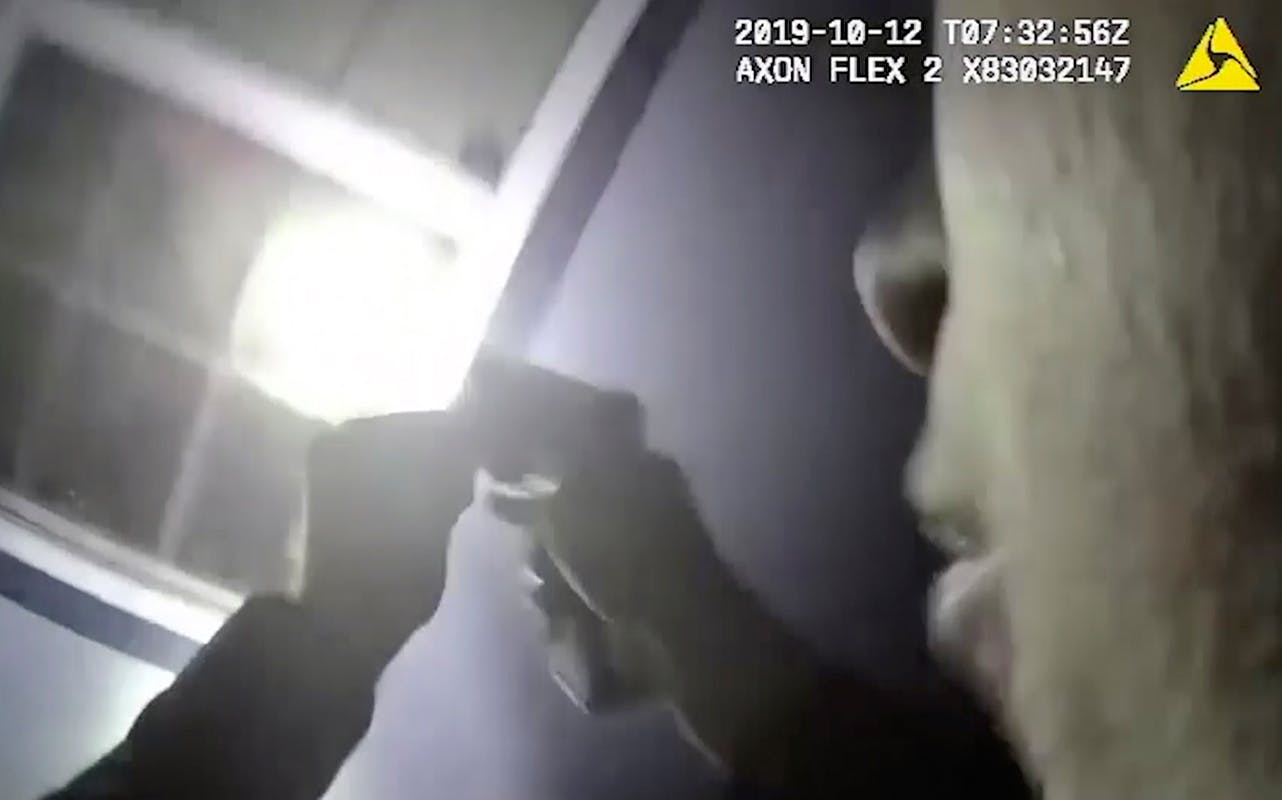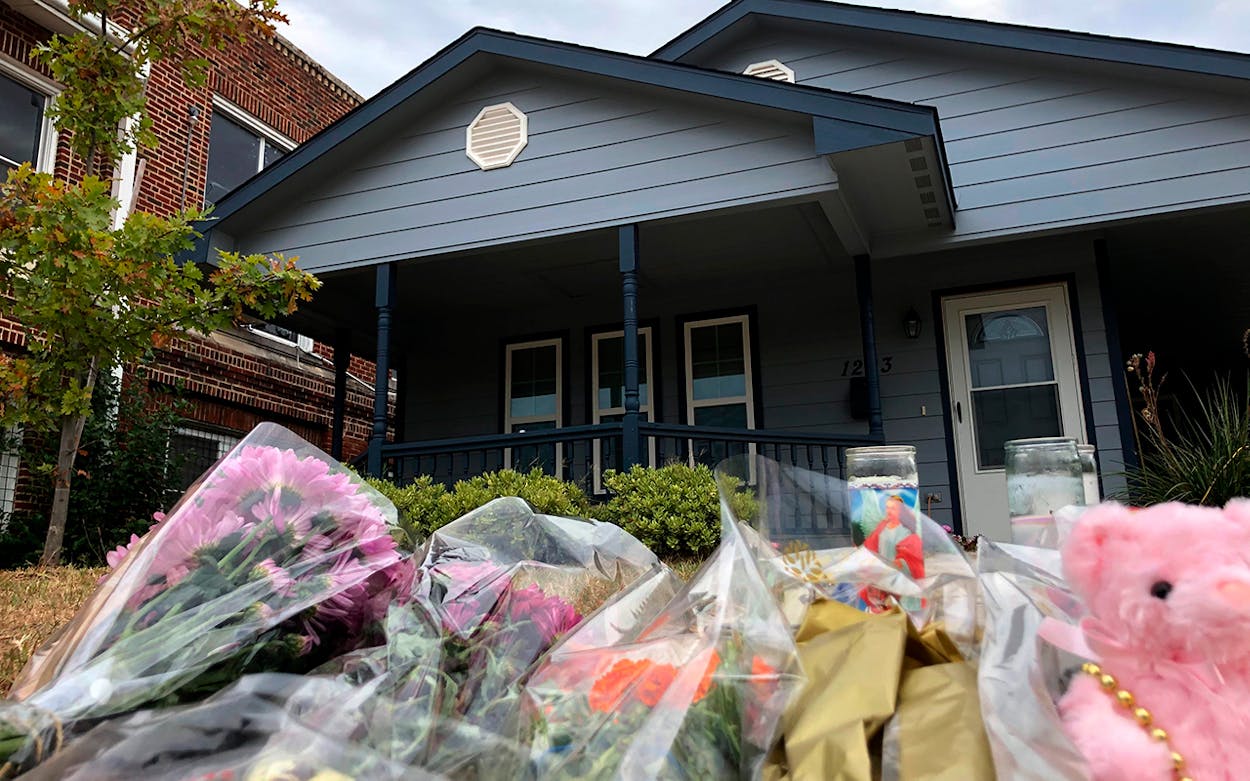Atatiana Jefferson’s family expressed relief late Monday at the news that former Fort Worth cop Aaron Dean has been charged with murder for fatally shooting Jefferson in her own home in the early hours of Saturday morning. In the same statement released through their lawyer, however, they called upon the city’s police department to reform its “brutal culture.”
It’s understandable that the family feels it must remain vigilant in its pursuit of justice for Jefferson, even if Dean’s resignation and arrest came relatively quickly. The actions of the Fort Worth Police Department in the hours immediately after Jefferson’s death were curious, yet all too familiar to close observers of other recent officer-involved shootings involving white cops and black victims. The department released certain details while keeping others to itself. The public was swiftly informed, for example, that Jefferson had a gun in her house. Photos of the weapon were even released, though police oddly said nothing about whether the 28-year-old woman was carrying the gun at the moment she was killed.
Nor was the department quick to disclose the name of the officer who’d shot her at around 2:25 a.m. Saturday. A neighbor had called police to ask if they could send a car by Jefferson’s house because he’d noticed that her lights were on and her door was open. He just wanted to make sure that she was okay.
The officer arrived at the scene a few minutes later. In the released footage from his body camera, we can watch for ourselves what happened next. He enters her yard, spots a figure inside the house, and quickly shouts, “Put your hands up. Show me your hands,” and then fires through the window. From the moment Jefferson notices someone in her yard and approaches her bedroom window, to when she is shot and killed, is about three seconds. At no point did Dean—whose name was finally released Monday afternoon, after he resigned—identify himself as a police officer.

The fact that Jefferson had a gun is the sort of information of questionable relevance that police often release early on following incidents like this. It’s reminiscent of when Dallas police last year revealed in short order that Botham Jean had small amounts of marijuana in his apartment when Amber Guyger walked in and killed him. Had Jefferson been carrying the weapon at the time of the shooting, the department would undoubtedly have made that clear from the start. To highlight a detail like that—one that appears to be nothing but an attempt to subtly shift blame onto a victim—breeds distrust in communities where the relationship between the police and black citizens is already fraught.
Recent history in the Dallas-Fort Worth area has seen far too many difficult moments play out between law enforcement and the people of color whom it’s supposed to serve and protect. The killing of James Harper by a Dallas cop in 2012. The 2015 McKinney pool party. The shooting, that same year, of Christian Taylor, an unarmed college football player, by an Arlington cop. The Dallas Police Department’s being slow to remove information it posted online that wrongly identified Mark Hughes as a suspect in the July 7, 2016, sniper attack. The violent arrest of Jacqueline Craig in Fort Worth in 2016, after she called police to report a man had assaulted her eight-year-old son. The shooting, in Balch Springs in 2017, of teenager Jordan Edwards by an officer who fired into a car in which Edwards was a passenger. And, of course, last year’s killing of Botham Jean, which made national headlines.
The first information to filter out about incidents like these tends to be inaccurate—early reports wrongly stated that Edwards drove toward the officer who killed him, when body camera footage proved the opposite; Dallas police left the posts on social media misidentifying Hughes online even after they’d established his innocence. It’s hard to shake the impression, as with the Botham Jean shooting, that the facts police choose to share first are intended to shape the narrative.
In the case of Atatiana Jefferson, that came with the early release of photos of the gun. Contrast the portrait of her that supposed “evidence” like that paints in our minds with what we later learned about Jefferson’s activities the night of her death. Shortly before she was gunned down, Jefferson was doing nothing more illicit than playing video games with her nephew.
I wanted to paint the last thing pre-Med graduate Atatiana Jefferson was doing before she was killed by the cops…
— NIKKOLAS (@4NIKKOLAS) October 13, 2019
Her Life Mattered.#AtatianaJefferson #TayJefferson #DallasFortWorth #FWPD pic.twitter.com/xiavrFO0pX
The Texas Observer recently looked at the ways distrust among the black community festers when police take actions—like ushering Guyger into a police car and turning off the dashcam after Jean’s death—that suggest the cops’ priority is protecting their own. When a black citizen can’t call the police to check on a neighbor without worrying that she might be killed, when a woman can’t call the cops to report an assault of her child without fearing she’ll be arrested herself, when the head of the local police union pulls an off-duty officer who killed someone into a car for a private conversation, when people are given incorrect or irrelevant details about victims, it’s hard for that community to feel as though the police exist to serve and protect them.
Dean’s arrest is a start, but once more, North Texas will wait to see if—in yet another case of police killing an unarmed black person—justice will be done.
- More About:
- Crime
- Fort Worth








